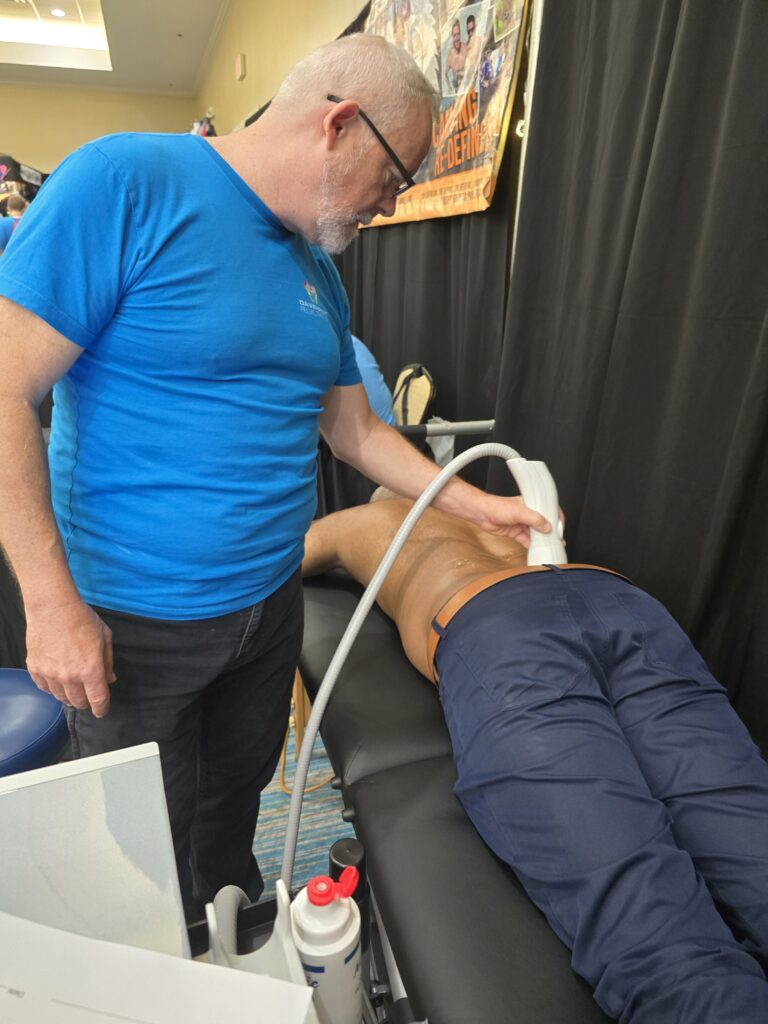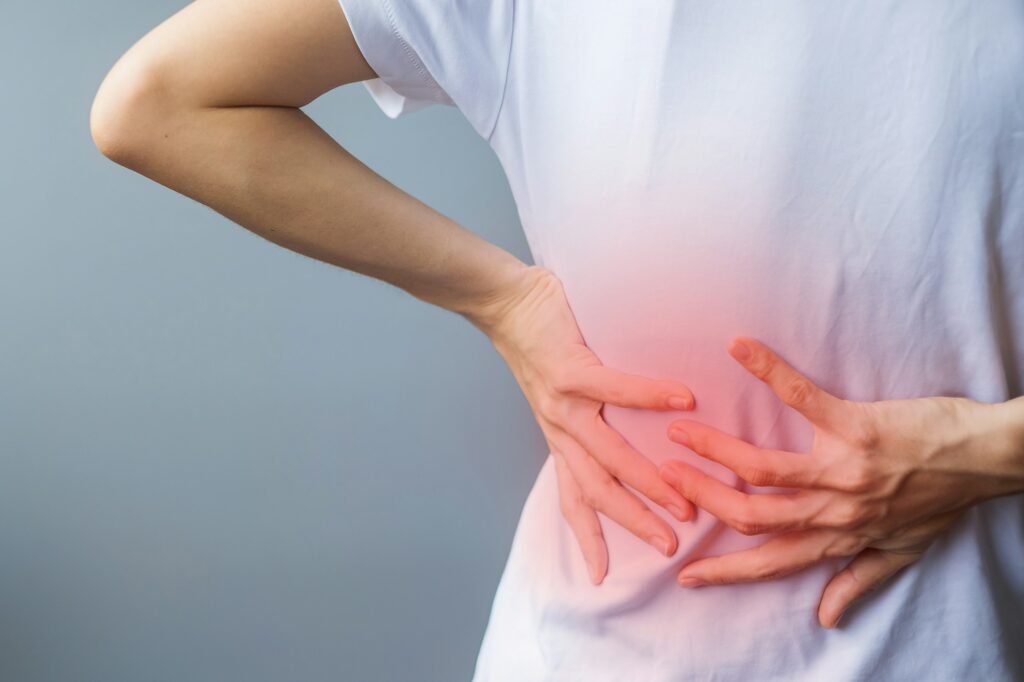Pelvic Therapy Services

Shockwave Therapy
We are excited to now offer SoftWave Tissue Regenerative Therapy (Shockwave Therapy)! It is a cutting-edge, non-invasive approach to pelvic health issues and beyond. Utilizing low-intensity acoustic waves delivered through advanced electrohydraulic spark gap technology and a parabolic reflector, SoftWave TRT stimulates healing at the cellular level without needles, anesthesia, or downtime. It encourages the body’s own regenerative mechanisms—improving blood flow, breaking down scar tissue and micro-plaques, activating stem cells, reducing inflammation, and repairing nerves and soft tissues—all of which can support healthier pelvic function and sexual performance.
This therapy targets a wide range of conditions—including erectile dysfunction (ED), chronic pelvic pain, prostatitis, Peyronie’s disease, post-surgical pain, muscle tension, ejaculatory issues, genital pain, and even diabetic neuropathy—by addressing root causes rather than just masking symptoms. Delivered in personalized, 15–30‑minute sessions, most clients report noticeable improvements within 3–6 treatments, and many experience relief even earlier. With backing from major institutions like the Cleveland Clinic and Memorial Sloan Kettering, SoftWave is an FDA-cleared, drug-free alternative that empowers men to reclaim comfort, function, and confidence.
Sexual Dysfunction
Sexual dysfunction can deeply affect your intimate relationships and personal satisfaction. Erectile Dysfunction (ED), affecting 10% of men per decade of life, is prevalent across age groups, with 20% of men in their 20s and 60% in their 60s suffering from it. While pills and injections offer treatment options, they often sacrifice spontaneity and may only address blood flow issues, neglecting other aspects like orgasm and ejaculation. Pelvic physical therapy offers a holistic solution by strengthening crucial muscles, enhancing natural erections, and improving ejaculatory function.
Premature Ejaculation
Premature ejaculation, impacting 20%-30% of men, can disrupt intimacy and fertility efforts. Pelvic physical therapy provides techniques for managing ejaculation timing through neuro re- education and biofeedback, empowering individuals to regain control.
Painful Ejaculation
Painful Ejaculation, a distressing issue affecting sexual enjoyment, can stem from muscle dysfunction. Pelvic physical therapy addresses these concerns through manual therapy, targeted exercises, and biofeedback, facilitating muscle control and reducing discomfort.
Painful intercourse
Painful intercourse, a common but not normal experience, can arise from various factors in both men and women. Pelvic physical therapy offers tailored interventions to alleviate discomfort and enhance sexual satisfaction. Beyond addressing specific dysfunctions, understanding the role of pelvic floor muscles and psychological factors like stress is essential. Collaborating with psychologists and sex therapists, comprehensive care aims to restore confidence and enjoyment in sexual experiences.



Low Back Pain
Low back pain affects many individuals, with a significant correlation to pelvic floor dysfunction, as highlighted by a 2018 study where 95% of back pain sufferers exhibited this issue. If you find yourself caught in a cycle of temporary relief followed by recurring pain, pelvic physical therapy offers a promising solution. Pelvic floor muscles play a crucial role in stabilizing the core and supporting the spine, making dysfunction in this area a potential cause of persistent back pain. Through hands-on techniques such as spinal alignments and myofascial release, akin to chiropractic and massage therapy approaches, pelvic physical therapy aims to address the root cause of back pain and provide lasting relief. Additionally, tools like EMG and biofeedback enhance treatment effectiveness by providing valuable insights into muscle function and coordination.
Pelvic Pain and Prostatitis
Pelvic pain can be emotionally distressing and isolating, affecting one’s ability to engage in social activities and intimacy. Pelvic physical therapy offers relief for conditions like pudendal neuralgia, often caused by tight muscles, providing techniques similar to those used for sciatica to decompress nerves and alleviate pain.
Prostatitis, characterized by inflammation of the prostate, often stems from tension in the pelvic area due to stress and anxiety, rather than infection. Therapy includes manual techniques, stress management, stretching, and biofeedback to address symptoms like painful erections and ejaculations.
For Benign Prostatic Hypertrophy (BPH), pelvic physical therapy can complement medical interventions by preparing the pelvic muscles for procedures and managing symptoms such as urinary difficulties and interrupted sleep.


Incontinence
Incontinence can be embarrassing and disruptive, with the prevalence of adult diaper use highlighting its growing impact. While products like pads and disposable underwear offer temporary relief, they fail to address the underlying causes of leaks. Pelvic physical therapy targets the root of the problem by restoring the coordination between pelvic floor muscles, bladder, and bowel function. Through techniques like E.M.G. guided biofeedback, therapy aims to eliminate the need for incontinence products and regain bladder and bowel control.
Ready to break free from reliance on diapers? Pelvic physical therapy offers a solution to tackle incontinence at its source.
Prostate Cancer
Prostate cancer treatment options vary, with discussions between you and your medical team crucial for tailoring to your needs and lifestyle. Like with BPH, preparing pelvic muscles before interventions through pelvic therapy is advisable, though not always feasible. However, post- procedure, pelvic physical therapy remains invaluable in addressing common issues like incontinence and erectile dysfunction. Whether you undergo a robotic prostatectomy, RF Ablation, or radiation, therapy aims to expedite recovery and restore function and dignity.
Don’t fret if pre-procedure therapy isn’t possible; post-procedure therapy offers effective solutions to aid your recovery journey.

